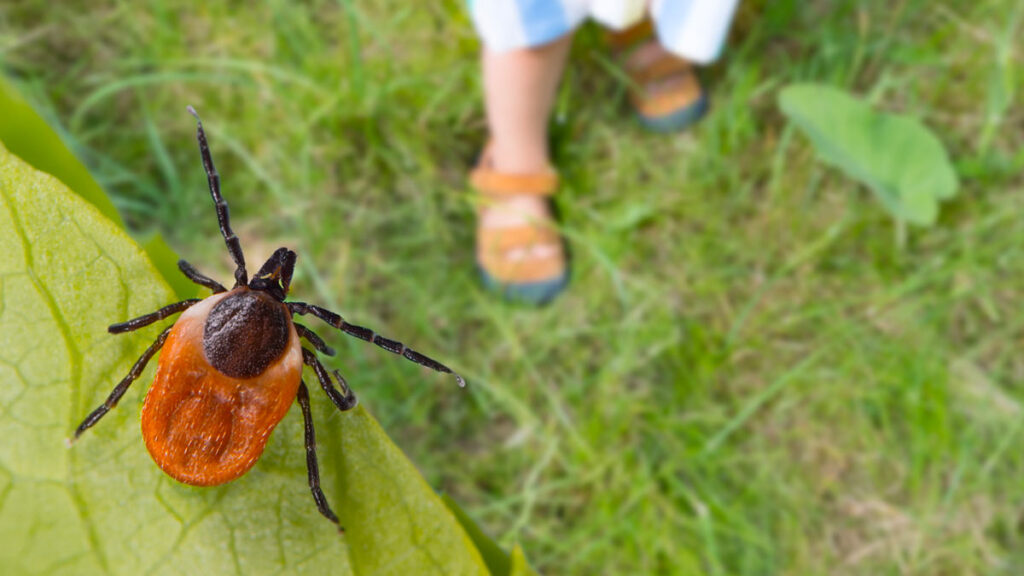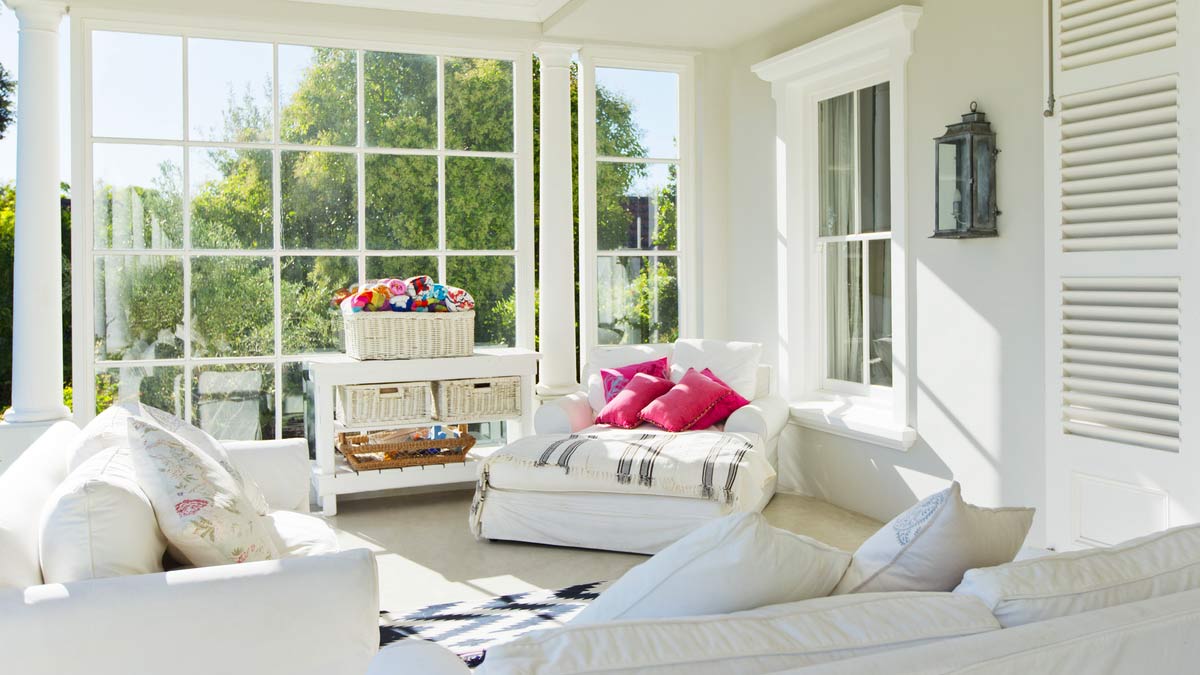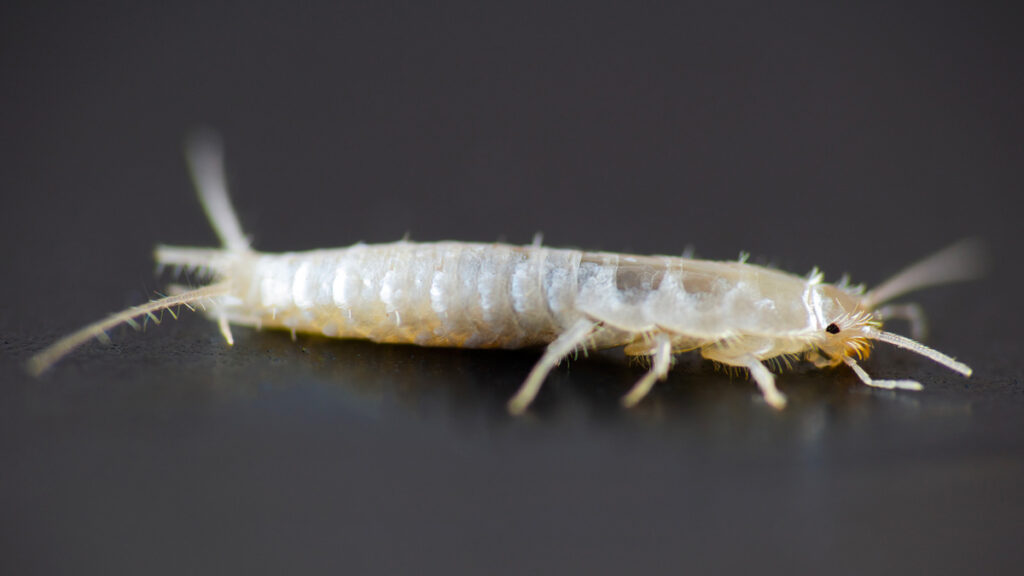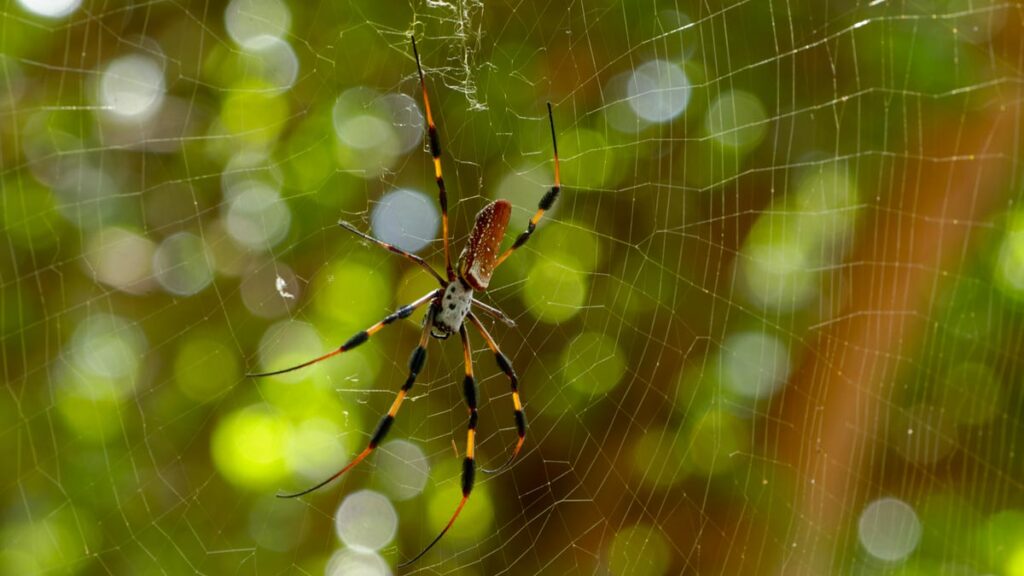
Florida Rooms and Pest Issues
A Comprehensive Guide to Detection and Prevention
Updated on: January 2024

Florida rooms, often dubbed sunrooms or lanais in various locales, have surged in popularity across homes in the Sunshine State and beyond. These spaces, typically characterized by large windows or screens, are designed to let homeowners bask in the beauty of their outdoor surroundings without stepping outside. Yet, while they offer a bridge between the comfort of indoors and the allure of outdoors, they unfortunately present an inviting environment for various pests. The unique design elements that make Florida rooms so beloved—ample sunlight, increased humidity, and ease of access to the outdoors—are the same features that make them susceptible to an array of troublesome critters, from mosquitoes to ants. As homeowners enjoy their tranquil moments in these spaces, it’s crucial to be aware of potential uninvited guests.
Find What You Need
The Appeal and Vulnerability of Florida Rooms to Pests
Delve into the factors that make Florida rooms susceptible to pest infestations and learn about materials that might attract unwanted visitors.
Primary Causes Leading to Pest Issues
Florida rooms, given their unique structure and purpose, often become unintentional havens for pests. One primary reason is the direct exposure to outdoor elements. Typically, Florida rooms are an extension of the main home but don’t always possess the same rigorous weatherproofing or insulation. This makes it easier for pests to access these spaces. Another reason is the presence of plants and water features, often incorporated to accentuate the outdoor ambiance, which can attract pests looking for food or moisture.
Why Florida Rooms’ Humidity and Design Make Them Prone to Infestations
The very essence of a Florida room is to capture the essence of the outdoors. As a result, they are commonly designed with large screen windows or vents to allow for natural air flow. While this brings in the freshness of the outdoors, it also allows a higher level of humidity, especially during warmer months. Many pests, such as mosquitoes, are attracted to humid environments for breeding. The design, often consisting of numerous entry and exit points, might inadvertently ease the access for pests. Moreover, the lack of solid barriers, in some designs which prioritize mesh or screens over glass, makes it convenient for smaller pests to penetrate.
Specific Materials or Fabrics That Attract Pests
Certain materials commonly used in decorating and furnishing Florida rooms can inadvertently beckon pests. For instance, wicker and rattan furniture, popular choices for these spaces, offer many crevices for spiders to build webs or for other pests to hide. Fabrics like cotton or linen, if left damp, can attract mites or mold, which in turn can become a food source for other pests. Furthermore, organic materials such as real wood can be susceptible to termites if not treated properly. Even certain decorative items, like dried flowers or untreated wooden crafts, can serve as potential homes or food sources for pests.
The Takeaway
Maintaining impeccable hygiene and promptly addressing potential entry points can reduce the risk of pest infestations in Florida rooms, where 80% of pest issues can be mitigated through proactive measures.
Recognizing the Signs: Early Detection Is Key
Uncover common pests found in Florida rooms and acquire insights on how to spot early indications of infestations, along with potential health concerns.
Common Pests Found in Florida Rooms
Florida rooms, given their proximity to the outdoors, attract a myriad of pests. Among the most common are:
Mosquitoes – Drawn to the warm and humid environment.
Ants – Specifically sugar ants and carpenter ants, which are attracted to leftover food or sugary substances.
Spiders – Ranging from the benign common house spider to the potentially dangerous brown recluse or black widow.
Cockroaches – Both the German and American varieties find Florida homes inviting.
Rodents – Such as mice and rats, which can view the Florida room as an entry to the house.
How to Spot Early Signs of Pest Infestations
Early detection is the first step in effective pest management:
Mosquitoes – Look for larvae in stagnant water sources like plant trays or ornamental fountains. Using a product such as “Mosquito Dunks” (priced around $12 for a pack of 6) can be effective against larvae.
Ants – An ant trail is a clear indicator, but tiny sawdust mounds can signal carpenter ant activity. For these, “Terro Liquid Ant Baits” (available for approximately $5 for a pack of 6) are recommended.
Spiders – Besides spotting the spiders themselves, webbing, especially around windows or light fixtures, can be indicative. “Miss Muffet’s Revenge” (sold at about $15 for a 64 oz bottle) can deter these arachnids.
Cockroaches – Check for live or dead insects, droppings, or egg cases. “Combat Max 12 Month Roach Killing Bait” (retails for roughly $11 for a pack of 18) can be a solution.
Rodents – Indicators include droppings, signs of gnawing, or even the noise of their movement. “Tomcat Mouse Traps” (available for around $5 for a pack of 2) are commonly used for such problems.
Potential Health Issues Caused by Pests
The presence of pests is more than just an inconvenience, it can also lead to health complications:
Mosquitoes – Known vectors of diseases such as West Nile virus, Zika, and dengue.
Ants – Their bites might cause allergic reactions in certain individuals.
Spiders – Bites from species like the brown recluse or black widow can be harmful and need medical care.
Cockroaches – Known to intensify asthma and allergies, particularly in children. Their droppings and cast-off skins are allergenic.
Rodents – Can spread diseases like hantavirus and leptospirosis and their droppings might exacerbate asthma or allergies.
Always seek advice from a healthcare professional if one suspects they’ve been impacted by any of these pests, especially if symptoms develop.
DIY and Natural Preventative Measures
Plants That Naturally Repel Pests in and Around Florida Rooms
Certain plants are nature’s way of keeping pests at bay. Integrating these into your Florida room can not only beautify the space but also act as a deterrent:
Lavender ($10-$20 per plant) – Its pleasant aroma is disliked by mosquitoes and moths.
Marigolds ($5-$10 per plant) – Contain pyrethrum, a natural insect repellent, which keeps away mosquitoes and aphids.
Lemon Balm ($7-$15 per plant) – A member of the mint family, it repels mosquitoes but can be invasive, so it’s recommended to plant it in pots.
Chrysanthemum ($8-$18 per plant) – Repels roaches, ants, ticks, and silverfish due to its pyrethrin content.
Natural or Organic Pesticides Effective for Florida Room Pests
Turning to nature again, there are organic solutions that are effective and safe for household use:
Neem Oil Spray ($10-$20 per bottle) – A versatile repellent for various pests like mosquitoes, ants, and spiders.
Diatomaceous Earth ($10-$25 per bag) – A powder that’s effective against crawling insects, like cockroaches and ants, by dehydrating their exoskeleton.
EcoSmart Organic Home Pest Control ($12-$20 per bottle) – Uses a blend of essential oils to deter a variety of pests.
DIY Pest Control Methods
Several home remedies can be surprisingly effective when it comes to deterring pests:
Coffee Grounds – Acting as a natural repellent, placing used coffee grounds in areas where ants are seen can deter them.
Peppermint Oil ($8-$15 per bottle) – A natural repellent for spiders and mice. A few drops on cotton balls placed in strategic locations can keep these pests at bay.
Cucumber Slices – An old trick for repelling ants. Placing slices or peels where ants enter the home can discourage them.
Vinegar Spray – A mix of equal parts vinegar and water can deter spiders when sprayed in entry points.
The Use of Ceiling or Standing Fans as Deterrents
Using air circulation to your advantage can be a simple yet effective way to keep flying pests away:
Ceiling Fans ($80-$400, depending on brand and features) – Brands like “Hunter” and “Hampton Bay” offer models that not only add aesthetic value but also create a downward airflow, disrupting the flying path of mosquitoes.
Standing Fans ($20-$150, based on size and functionality) – Brands such as “Honeywell” and “Dyson” produce oscillating fans that can be strategically placed to deter flying pests, especially in areas of the room where people frequently sit.
Remember, while DIY methods can be efficient and cost-effective, for more severe infestations, consulting a professional might be necessary.
Fortifying the Florida Room: Physical Barriers and Practices
Gain insights into effective methods for sealing gaps, maintaining cleanliness, and choosing appropriate furniture to prevent pests from making themselves at home.
Effective Methods to Seal Gaps and Crevices
Ensuring that your Florida room is structurally secure is the first line of defense against pests.
Weather Stripping ($5-$20 per roll) – Brands like “Frost King” and “MD Building Products” offer self-adhesive strips that can seal window and door gaps effectively, preventing tiny invaders like ants and spiders.
Caulk & Sealants ($4-$15 per tube) – Using products like “DAP” or “GE Silicone” to fill in gaps or cracks in the walls, floor, or where the Florida room connects to the main building can keep out pests.
Expandable Foam Sealants ($5-$25 per can) – Brands such as “GREAT STUFF” are useful for larger gaps, especially around pipes or fixtures, and can deter rodents.
Door Sweeps ($10-$50) – Installing these at the bottom of doors, with options from brands like “Pemko” or “National Guard”, can block entry for crawling pests.
Importance of Cleaning and Regular Inspection
Maintaining a clean Florida room is not just about aesthetics but also about preventing pests:
Routine Cleaning – Regular vacuuming (using brands like “Dyson” or “Shark”, ranging from $150-$600) can pick up pests, their eggs, or their food sources. Wiping down surfaces can remove residue that attracts pests.
Scheduled Inspections – Set aside a day every few months to thoroughly inspect the room, looking for signs of pests or potential entry points. Early detection can save significant time and expense later.
Storage Practices – Using sealed containers, like those from “Rubbermaid” or “OXO” ($5-$30 depending on size), especially for food items, will deter pests.
Tips on Furniture Choice and Care to Avoid Harboring Pests or Eggs
Choose Pest-resistant Materials – Opt for metal or plastic furnishings over wicker or untreated wood. Brands like “Ikea” or “Wayfair” offer a variety of choices.
Regular Inspection – Check underneath and behind furniture regularly. For upholstered pieces, consider brands with removable, washable covers such as “Pottery Barn” or “IKEA”.
Use Furniture Covers ($20-$150) – When the Florida room isn’t in use, cover furniture with protective covers from brands like “Classic Accessories” or “Duck Covers”. This not only shields furniture from pests but also from dust and wear.
Furniture Treatments – Applying repellents, like “Scotchgard Fabric Protector” ($10-$20 per can), can deter pests and also protect furniture from stains.
By investing a bit in fortifying your Florida room and following best practices, you can enjoy your space without the unwanted company of pests.
The Common Culprits and Solutions
Battle mosquitoes, keep ants in check, combat cockroach infestations, strategize against spiders, and learn how to rodent-proof your Florida room.
Battling Mosquitoes: Prevention and Elimination
Mosquitoes, with their itchy bites and potential for disease transmission, can be a major nuisance.
Water Elimination – Empty any standing water in containers, as this is a primary breeding site.
Mosquito Nets – Consider installing mosquito nets around the Florida room. These act as physical barriers and are especially effective during peak mosquito hours.
Repellents – Products like “OFF!” or “Cutter” offer sprays and lotions. Also, citronella candles or torches can deter these pests.
Mosquito Zappers – Devices like the “Flowtron Electronic Insect Killer” Bycan attract and kill mosquitoes.
Natural Predators – Introducing fish like gambusia in ornamental ponds can help by eating mosquito larvae.
Keeping Ants at Bay: Tips and Tricks
Ants can infiltrate in large numbers, making them especially challenging.
Keep Food Sealed – Ensure all food items are sealed. This is their primary attraction.
Natural Repellents – Sprinkling diatomaceous earth or drawing chalk lines can deter ants, as they dislike crossing such barriers.
Bait Stations – Products like “Terro Liquid Ant Baits” can be effective. The worker ants carry the poison back to the colony, gradually eliminating it.
Mint – Ants dislike the scent of mint. Planting mint around the perimeter or using mint oil can be a deterrent.
The Scourge of the Cockroach: How to Combat an Infestation
The mere sight of a cockroach can be unnerving, but there are effective combat strategies.
Hygiene – Keeping the Florida room clean, especially free from food crumbs or residues, is crucial.
Bait Stations – “Combat” and “Raid” offer cockroach baits that attract and kill roaches, interrupting their lifecycle.
Seal Entry Points – Using caulk to seal off potential entry points, especially around plumbing, can be a preventative measure.
Diatomaceous Earth – This natural powder is lethal to cockroaches and can be sprinkled in areas of activity.
Avoiding Spiders: Strategies to Keep Them Out
While most spiders are harmless, their presence is often unwelcome.
Regular Cleaning – Dusting and vacuuming frequently, especially in corners or behind furniture, removes webs and deters spiders.
Seal Gaps – Ensure windows, doors, and any crevices are sealed properly to prevent entry.
Natural Repellents – Peppermint oil, as mentioned earlier, is a known spider deterrent. A light spray around potential entry points can keep them at bay.
Keep Exterior Lights Off – Lights can attract insects, which in turn attract spiders.
Rodent-Proofing Your Florida Room
Mice and rats can be more than a nuisance; they can cause structural damage and pose health risks.
Physical Barriers – Ensure all potential entry points, no matter how small, are sealed. Use steel wool or hardware cloth for added security.
Keep Food Away – Just like with ants and cockroaches, ensure no food is left exposed.
Traps – Traditional snap traps or live traps can be effective. Brands like “Victor” and “Tomcat” offer a range of rodent control products.
Ultrasonic Repellents – Devices like those from “Neatmaster” emit a frequency unpleasant for rodents, deterring them from entering.
By understanding each pest and its habits, homeowners can take targeted actions to protect their Florida rooms and ensure a pest-free environment.
The Role of Pets and Landscaping
How Household Pets Can Contribute to or Help in Controlling Pests
The presence of pets in a household can have both positive and negative implications when it comes to pest control.
Cats as Natural Predators – Cats are natural hunters and can effectively control rodent populations. Their mere presence can deter mice and rats from entering a space.
Dogs and Digging – While dogs may occasionally chase and catch pests, their tendency to dig can create conducive environments for pests like ants or burrowing rodents.
Pet Food Attraction – Leftover pet food can attract a host of pests, from ants and cockroaches to rodents. It’s essential to store pet food in sealed containers and avoid leaving it out for extended periods.
Fleas and Ticks – Pets can bring in fleas or ticks from the outdoors. Regular grooming, veterinary check-ups, and preventive measures can control these potential infestations.
Outdoor Plants and Landscaping: Attracting or Repelling Pests?
Landscaping choices can play a significant role in either inviting pests or keeping them at bay.
Plant Selection – Some plants, like marigolds, lavender, and chrysanthemums, repel specific pests due to their aroma or the compounds they release. Incorporating such plants can make the area around the Florida room less attractive to pests.
Mulch and Pests – While mulch can make gardens look tidy, it can also provide a moist shelter for pests like ants, roaches, and termites. Opt for alternatives like pea gravel or crushed stone in areas close to the house.
Standing Water – Features like ponds or bird baths can attract mosquitoes. If such features are desired, ensure regular water circulation or introduce mosquito-eating fish.
Regular Maintenance – Overgrown shrubs or grass can offer hiding spots for pests. Regular trimming and maintenance can eliminate such havens, reducing the chances of pests migrating to the Florida room.
Landscaping and pet management are often overlooked aspects of pest control. By making informed choices and practicing regular maintenance, homeowners can effectively reduce the chances of infestations.
Seeking Professional Help: When and How to Consider Professional Pest Control Services
Learn when to seek the expertise of professional pest control services and understand the potential risks associated with chemical pesticides in enclosed spaces.
Recognizing the Need for Professional Pest Control
While many pest control strategies can be tackled on your own, there are situations where seeking professional help becomes necessary. Here’s when and why you should consider enlisting the services of a pest control expert:
Severe Infestations
When pests have overrun your Florida room, and DIY methods are proving ineffective, professional intervention is crucial. Experts have the knowledge, experience, and tools to address severe infestations comprehensively.
Persistent Challenges
If you find that the same pest issues keep recurring despite your efforts, it’s time to consult professionals. They can identify underlying causes and implement long-lasting solutions.
Structural Vulnerabilities
Certain pests can exploit structural weaknesses, posing risks to your home’s integrity. Professionals can assess vulnerabilities and offer solutions to prevent further damage.
Health Concerns
Pests like rodents, cockroaches, and certain insects can pose health risks through allergens, bites, or disease transmission. If family members are experiencing health issues related to pests, professional intervention is recommended.
The Potential Risks of Chemical Pesticides in Enclosed Spaces
Understanding the Balance: Benefits and Risks of Chemical Pesticides
Chemical pesticides can be effective in eradicating pests, but their use in enclosed spaces, such as Florida rooms, requires careful consideration due to potential risks.
Exposure Concerns
Enclosed spaces have limited ventilation, which can lead to higher pesticide concentrations. Prolonged exposure to these chemicals can pose risks to human health, especially for children, the elderly, and those with respiratory conditions.
Non-Target Effects
Chemical pesticides are designed to target specific pests, but they can also harm non-target organisms. Beneficial insects, pets, and even humans can inadvertently come into contact with these chemicals.
Residue Accumulation
Pesticide residues can linger on surfaces, furnishings, and even in the air. Over time, this residue can accumulate, leading to prolonged exposure and potential contamination of the indoor environment.
Professional Expertise: Minimizing Risks
When opting for professional pest control services, ensure you choose licensed and reputable professionals who prioritize safety. Professionals are trained to assess the situation, determine appropriate treatments, and apply chemicals judiciously to minimize risks.
Eco-Friendly Alternatives: Balancing Efficacy and Safety
Consider pest control companies that offer eco-friendly alternatives, such as integrated pest management (IPM) techniques. These methods focus on prevention, monitoring, and targeted treatment to reduce chemical reliance.
Open Communication: Discussing Concerns
If you’re concerned about chemical pesticide use, communicate your worries to the pest control company. A responsible provider will address your concerns, explain their methods, and work with you to find a solution that balances pest control effectiveness and safety for your Florida room environment.
Professional pest control services can be a valuable resource when facing stubborn infestations or seeking expert advice. However, in enclosed spaces, the potential risks associated with chemical pesticides warrant careful consideration. By understanding the need for professional intervention, evaluating risks, and engaging in open communication with experts, homeowners can strike a balance between effective pest control and maintaining a safe and healthy living environment.
Keeping It Safe: Ensuring Pest Control Methods are Harmless for Children and Pets
Balancing Pest Control with Safety for Young Ones and Furry Friends
Prioritizing Safety in Pest Control
While addressing pest issues in your Florida room is essential, ensuring the safety of your children and pets is paramount. Striking a balance between effective pest control and the well-being of your loved ones requires thoughtful consideration and informed choices.
Non-Toxic Approaches: A Safer Choice
Opt for pest control methods that are non-toxic or minimally invasive. Natural remedies and preventive measures often pose fewer risks to children and pets. This includes using barriers, sealing entry points, and maintaining impeccable cleanliness.
Child and Pet-Friendly Products: Reading Labels Carefully
If you choose to use pest control products, carefully read labels to ensure they are safe for children and pets once they dry. Some products require temporary evacuation during application and drying to prevent exposure. Choose those with lower toxicity levels whenever possible.
Keep Areas Off-Limits During Treatment
During and immediately after pest control treatment, consider cordoning off the treated areas. Restrict access to children and pets until the product has dried or dissipated. This prevents accidental contact or ingestion of treated surfaces.
Professional Expertise: A Safety Net
When opting for professional pest control services, communicate your concerns about child and pet safety. Reputable pest control companies are well-versed in using treatments that are safe for your entire household. Discuss your specific requirements and ask for information about the products they plan to use.
Timely Ventilation: Clearing the Air
After pest control treatment, ensure thorough ventilation of the treated areas. Open windows and use fans to help dissipate any lingering fumes. This step is particularly important if chemical treatments are used.
Educating and Supervising
Teach your children about the importance of not touching or playing with pest control products or treated areas. Similarly, supervise pets and discourage them from exploring recently treated spaces.
Creating a pest-free Florida room shouldn’t come at the expense of your family’s safety. Prioritizing non-toxic methods, careful product selection and effective communication with professionals can help you strike the delicate balance between a pest-free environment and the well-being of your children and pets. Remember, a safer approach to pest control ensures a healthy and harmonious living space for everyone.
Conclusion: A Resilient Defense Against Pest Intrusions
In the quest for a pest-free Florida room, the importance of proactive measures cannot be overstated. By understanding the vulnerabilities of these inviting spaces and taking informed actions, homeowners can create an environment that deters pests from infiltrating and disrupting their haven. Regular monitoring stands as a sentinel against potential infestations. Just as a vigilant guard patrols their post, consistent observation allows for the early detection of any signs of pest activity. Early intervention, fueled by swift and targeted actions, prevents minor nuisances from evolving into major battles. The journey to a pest-free Florida room is ongoing. Encouragement lies in the fact that with dedication and a commitment to regular maintenance, the reward is a sanctuary that remains a haven for relaxation and enjoyment. By taking these steps, homeowners can reclaim their spaces, defending them against the tiniest intruders and ensuring that the allure of their Florida room remains undiminished for years to come.





